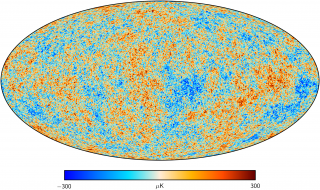Bibcode
AMI Consortium; Shimwell, T. W.; Barker, R. W.; Biddulph, P.; Bly, D.; Boysen, R. C.; Brown, A. R.; Brown, M. L.; Clementson, C.; Crofts, M.; Culverhouse, T. L.; Czeres, J.; Dace, R. J.; Davies, M. L.; D'Alessandro, R.; Doherty, P.; Duggan, K.; Ely, J. A.; Felvus, M.; Feroz, F.; Flynn, W.; Franzen, T. M. O.; Geisbüsch, J.; Génova-Santos, R.; Grainge, K. J. B.; Grainger, W. F.; Hammett, D.; Hobson, M. P.; Holler, C. M.; Hurley-Walker, N.; Jilley, R.; Kaneko, T.; Kneissl, R.; Lancaster, K.; Lasenby, A. N.; Marshall, P. J.; Newton, F.; Norris, O.; Northrop, I.; Odell, D. M.; Olamaie, M.; Perrott, Y. C.; Pober, J. C.; Pooley, G. G.; Pospieszalski, M. W.; Quy, V.; Rodríguez-Gonzálvez, C.; Saunders, R. D. E.; Scaife, A. M. M.; Schammel, M. P.; Schofield, J.; Scott, P. F.; Shaw, C.; Smith, H.; Titterington, D. J.; Velić, M.; Waldram, E. M.; West, S.; Wood, B. A.; Yassin, G.; Zwart, J. T. L.
Referencia bibliográfica
Monthly Notices of the Royal Astronomical Society, Volume 423, Issue 2, pp. 1463-1473.
Fecha de publicación:
6
2012
Número de citas
12
Número de citas referidas
10
Descripción
We present an interesting Sunyaev-Zel’dovich (SZ) detection in the
first of the Arcminute Microkelvin Imager (AMI) ‘blind’,
degree-square fields to have been observed down to our target
sensitivity of ?. In follow-up deep pointed observations the SZ effect
is detected with a maximum peak decrement greater than eight times the
thermal noise. No corresponding emission is visible in the ROSAT all-sky
X-ray survey and no cluster is evident in the Palomar all-sky optical
survey. Compared with existing SZ images of distant clusters, the extent
is large (≈10 arcmin) and complex; our analysis favours a model
containing two clusters rather than a single cluster. Our Bayesian
analysis is currently limited to modelling each cluster with an
ellipsoidal or spherical β model, which does not do justice to this
decrement. Fitting an ellipsoid to the deeper candidate we find the
following. (a) Assuming that the Evrard et al. approximation to Press
& Schechter correctly gives the number density of clusters as a
function of mass and redshift, then, in the search area, the formal
Bayesian probability ratio of the AMI detection of this cluster is 7.9
× 104:1; alternatively assuming Jenkins et al. as the
true prior, the formal Bayesian probability ratio of detection is 2.1
× 105:1. (b) The cluster mass is ?. (c) Abandoning a
physical model with number density prior and instead simply modelling
the SZ decrement using a phenomenological β model of temperature
decrement as a function of angular distance, we find a central SZ
temperature decrement of ?K - this allows for cosmic microwave
background primary anisotropies, receiver noise and radio sources. We
are unsure if the cluster system we observe is a merging system or two
separate clusters. We request that any reference to this paper cites
‘AMI Consortium: Shimwell et al. 2012’.
Proyectos relacionados

Anisotropía del Fondo Cósmico de Microondas
El objetivo general de este proyecto es determinar y estudiar las variaciones espaciales y espectrales en la temperatura del Fondo Cósmico de Microondas y en su Polarización en un amplio rango de escalas angulares que van desde pocos minutos de arco hasta varios grados. Las fluctuaciones primordiales en la densidad de materia, que dieron origen a
Rafael
Rebolo López